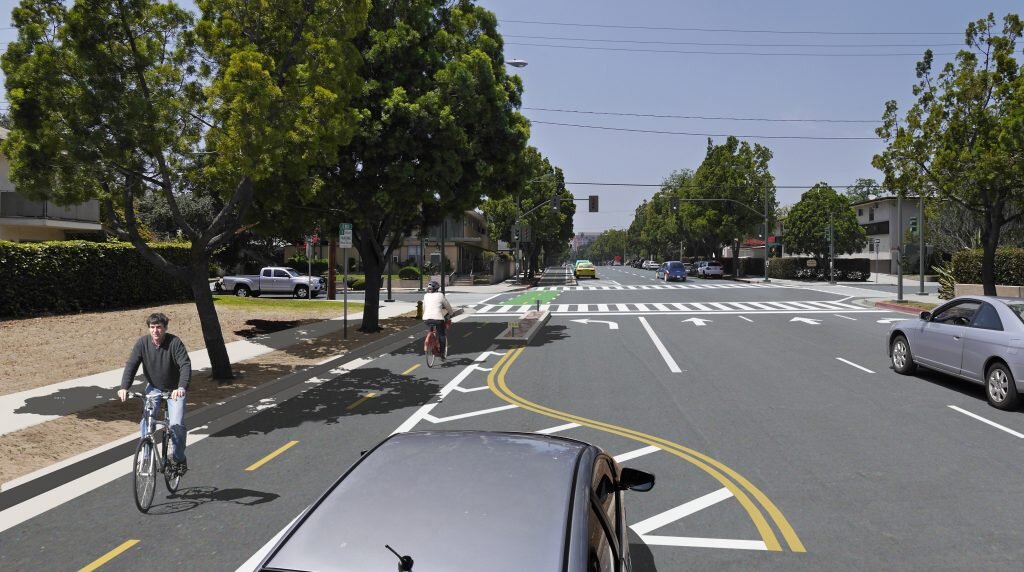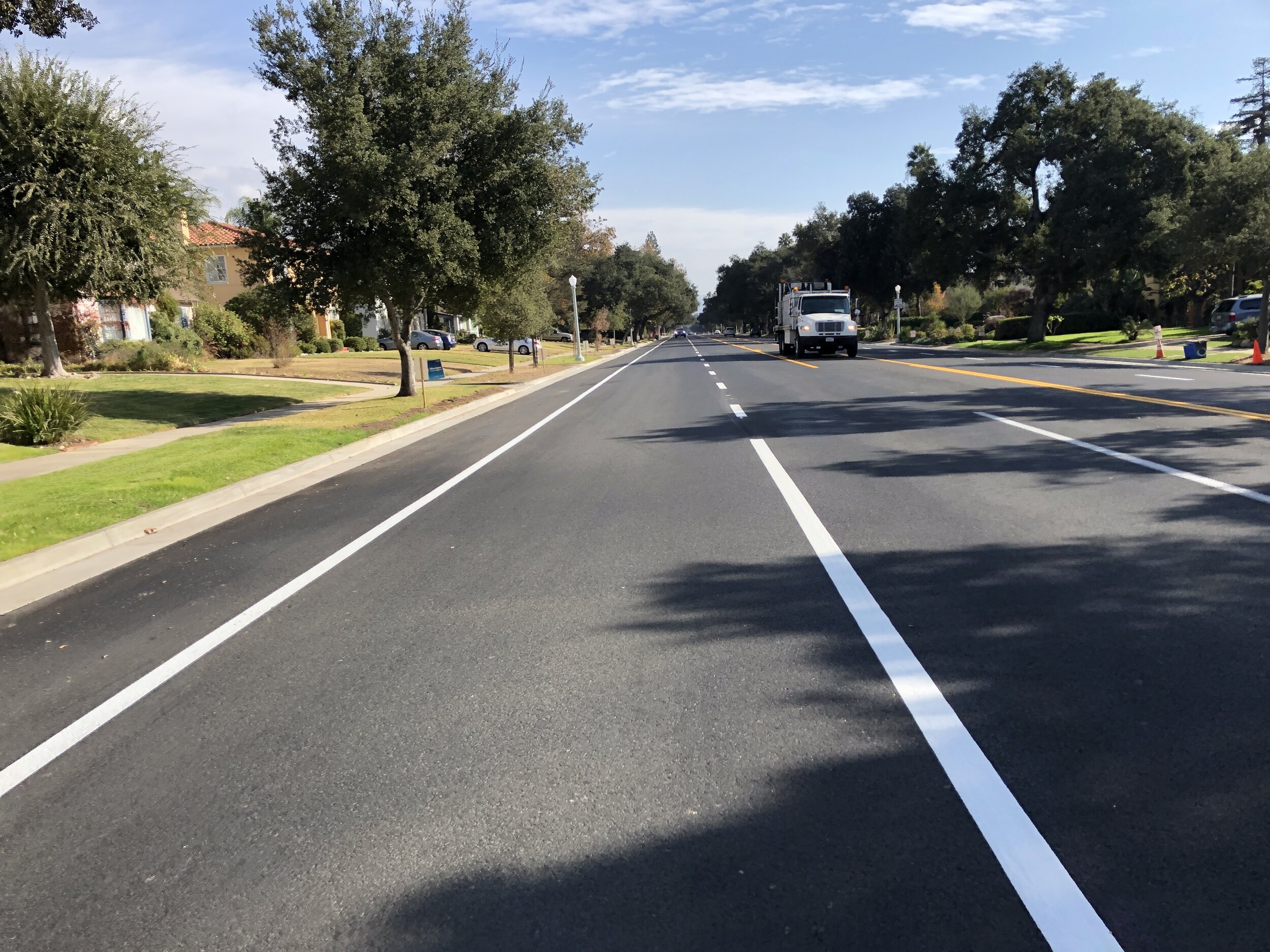Study Finds Protected Bike Lanes Increase Traffic Safety for Everyone-Including Drivers
Lawrence and Arapahoe Protected Bike Lane - Denver, CO
Photo: Kimley Horn
There are lots of reasons cities like Pasadena should have more protected bike lanes: they encourage more people of all ages to bike for local trips, and by doing so, can decrease the number of cars on the road--and that’s a benefit to everyone’s health as well as the health of the planet.
But there’s another good reason: they improve traffic safety for everyone, including drivers and pedestrians. That’s right, an extensive 13-year study of multiple cities around the US, conducted by researchers at the University of Colorado Denver and the University of New Mexico, found a dramatic reduction of road fatalities for all road users on streets that had protected bike lanes. Why is that? We’ll get to that in a minute. But first, some basics.
What are protected bike lanes? Simply put, protected bike lanes are bike lanes that have some sort of barrier between people using the bike lane (whether on bikes, e-bikes, scooters, or other mobility devices) and people driving cars. This barrier is more than paint. It could be a row of parked cars, a curb, a row of planter boxes, bollards, flex posts, or other physical barrier. The most advanced designs also have some protection for people on bikes in intersections, too. Protected bike lanes are very common in Europe and parts of Asia, and they are becoming more common in the United States. Pasadena DOT is planning Pasadena’s first protected bike lanes (sometimes called a “cycle track”) on Union Street, with an expected construction start date in 2021.
Rendering of Union Street Protected Bike Lane
Photo: City of Pasadena
By providing physical protection for people on bikes, protected bike lanes are safer for cyclists, but what about other road users? What about people walking and people driving? Turns out, streets with protected bike lanes are safer for everyone, regardless of how they choose to get around. As reported by Science Daily, researchers studied data on traffic fatalities in 12 US cities and found that those streets with protected bike lanes had the highest mode share of people riding bikes (remember, protected bike lanes enable more people to feel safe biking, so more people do it) and lower fatality rates for all road users, not just cyclists. Fatalities fell by over 38% in Chicago, 40% in Denver, nearly 50% in San Francisco, 60% in Seattle, and a whopping 75% in Portland, OR. What these cities had in common were protected bike lanes. The researchers concluded that:
“…building safe facilities for cyclists is one of the biggest factors in road safety for everyone. Bicycling infrastructure -- specifically, separated and protected bike lanes -- leads to fewer fatalities and better road-safety outcomes for all road users.”
Great news, right? Two things should be remembered: the biggest benefits came from bike lane designs that had more than just paint between bikes and cars, but most importantly, the study found that road designs that provided protected bike infrastructure are not just safer for cyclists--they’re safer for everyone.
Now, back to the question of why the benefits of protected bike lanes extend to people who aren’t on bikes. The study found the main reason for this was the traffic calming effect protected bike lanes have on all road users. With protected bike lane street designs, traffic speeds are lowered, so when collisions do occur, they are far less likely to be fatal, and this protects everyone. Let’s face it, people make mistakes, but designing streets for slower speeds means fewer of those mistakes result in people dying.
Orange Grove repaved and re-striped (that’s not a bike lane near the curb).
Photo: John Lloyd
In 2018, Pasadena cancelled a planned safer design for Orange Grove Blvd after some people complained about possible traffic slowing. It is important for people to understand that road redesigns that slow vehicle speeds are not just for cyclists, they’re safer for everyone. Recently I drove along the newly resurfaced section of Orange Grove in East Pasadena, and I decided to keep up with the prevailing speed of the cars around me. Drivers were going between 45 and 50 MPH along this largely residential street, with homes, a library, churches, schools, and parks nearby. Why? The current less-safe design encourages speeding, and this almost guarantees we will see more fatalities on Orange Grove. Indeed, two people have died in separate crashes on Orange Grove in 2020. This study shows it doesn’t have to be this way.
Here’s hoping Pasadena leaders understand the importance of protected bike infrastructure for everyone. Protected bike lanes--they’re not just for cyclists.



